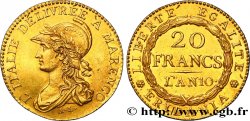lc236 - Charles I Oxford Mint Half-Crowns (1642-1646) BULL Maurice
128.00 €约 1062.40 CNY
数量
加入购物车

作者 BULL Maurice
出版者 Spink
语言 Anglais
描述细节 Londres 2023, relié (31 x 21,50 cm), lxi + 385 pages, catalogue illustré en noir et blanc
重量 1950 g.
评论
This publication is the culmination of a lifetime’s work collecting, studying, and recording full details of the Half-crown denomination struck at the Oxford Mint, 1642-1646, the largest of all the King’s Provincial Mints during the Civil War of England (1642-1649). The Half-crown was the most important denomination required during the Civil War since it was the daily rate of pay for a Royalist cavalier, and useful to pay other ranks accordingly. It is worth pointing out that the Parliamentary cavalier only received two shillings per day.
It is also a record of all the surviving specimens known to the author in 2023 (though no doubt more are certain to come to light in due course). In addition to every example being illustrated, the provenance of each one is also recorded. This has the benefit of showing the numbers of each variety, still extant, and the grades of each one. The coins were struck by the contemporary method of a hammer, and demonstrate the skills of the moneyers working under pressure to convert donations of silverware and bullion into coins to support the Royal cause. As with all Provincial Mints of this period, except possibly Shrewsbury, no records exist of the actual value of coins struck.
That so many varieties of all the Provincial coins still exist today is mainly due to their fascination and desirability with contemporary collectors and recently discovered hoard.
It is also a record of all the surviving specimens known to the author in 2023 (though no doubt more are certain to come to light in due course). In addition to every example being illustrated, the provenance of each one is also recorded. This has the benefit of showing the numbers of each variety, still extant, and the grades of each one. The coins were struck by the contemporary method of a hammer, and demonstrate the skills of the moneyers working under pressure to convert donations of silverware and bullion into coins to support the Royal cause. As with all Provincial Mints of this period, except possibly Shrewsbury, no records exist of the actual value of coins struck.
That so many varieties of all the Provincial coins still exist today is mainly due to their fascination and desirability with contemporary collectors and recently discovered hoard.








 对产品描述纠错
对产品描述纠错 打印
打印 分享我的选择
分享我的选择 提问
提问










